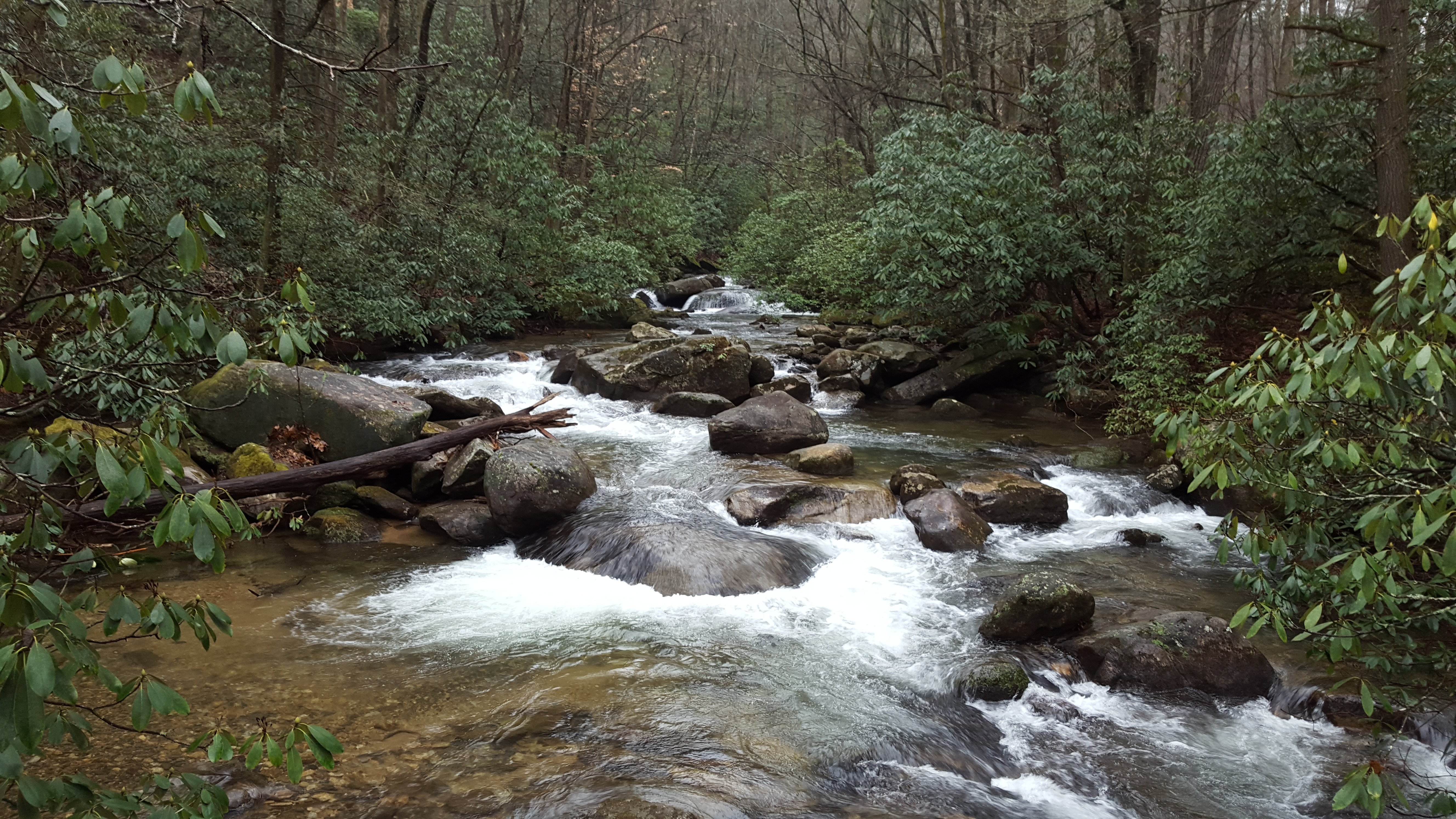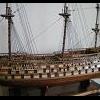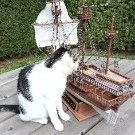Supplies of the Ship Modeler's Handbook are running out. Get your copy NOW before they are gone! Click on photo to order.
×
-
Posts
10,056 -
Joined
-
Last visited
Reputation Activity
-
 ccoyle got a reaction from Dave_E in Salmson 2 A.2 by ccoyle - FINISHED - WAK - 1/33 - CARD - in markings of aircraft flown by Capt. Arthur J. Coyle, 1st Squadron, US Air Service, Autumn 1918
ccoyle got a reaction from Dave_E in Salmson 2 A.2 by ccoyle - FINISHED - WAK - 1/33 - CARD - in markings of aircraft flown by Capt. Arthur J. Coyle, 1st Squadron, US Air Service, Autumn 1918
I remember reading a long time ago that some very early paper models have survived surprisingly long times in museums. As for my models, they will probably survive until I die, but after that all bets are off!
-
 ccoyle got a reaction from rlwhitt in Salmson 2 A.2 by ccoyle - FINISHED - WAK - 1/33 - CARD - in markings of aircraft flown by Capt. Arthur J. Coyle, 1st Squadron, US Air Service, Autumn 1918
ccoyle got a reaction from rlwhitt in Salmson 2 A.2 by ccoyle - FINISHED - WAK - 1/33 - CARD - in markings of aircraft flown by Capt. Arthur J. Coyle, 1st Squadron, US Air Service, Autumn 1918
Empennage is done. I can't give this kit high marks for number and quality of diagrams, not for sufficiency of internal structure. I had to muddle through the former and scratch-build some of the latter, but it turned out okay, I think.
-
 ccoyle got a reaction from Javlin in Salmson 2 A.2 by ccoyle - FINISHED - WAK - 1/33 - CARD - in markings of aircraft flown by Capt. Arthur J. Coyle, 1st Squadron, US Air Service, Autumn 1918
ccoyle got a reaction from Javlin in Salmson 2 A.2 by ccoyle - FINISHED - WAK - 1/33 - CARD - in markings of aircraft flown by Capt. Arthur J. Coyle, 1st Squadron, US Air Service, Autumn 1918
Empennage is done. I can't give this kit high marks for number and quality of diagrams, not for sufficiency of internal structure. I had to muddle through the former and scratch-build some of the latter, but it turned out okay, I think.
-
 ccoyle got a reaction from Danstream in Salmson 2 A.2 by ccoyle - FINISHED - WAK - 1/33 - CARD - in markings of aircraft flown by Capt. Arthur J. Coyle, 1st Squadron, US Air Service, Autumn 1918
ccoyle got a reaction from Danstream in Salmson 2 A.2 by ccoyle - FINISHED - WAK - 1/33 - CARD - in markings of aircraft flown by Capt. Arthur J. Coyle, 1st Squadron, US Air Service, Autumn 1918
Empennage is done. I can't give this kit high marks for number and quality of diagrams, not for sufficiency of internal structure. I had to muddle through the former and scratch-build some of the latter, but it turned out okay, I think.
-
 ccoyle got a reaction from Rik Thistle in Salmson 2 A.2 by ccoyle - FINISHED - WAK - 1/33 - CARD - in markings of aircraft flown by Capt. Arthur J. Coyle, 1st Squadron, US Air Service, Autumn 1918
ccoyle got a reaction from Rik Thistle in Salmson 2 A.2 by ccoyle - FINISHED - WAK - 1/33 - CARD - in markings of aircraft flown by Capt. Arthur J. Coyle, 1st Squadron, US Air Service, Autumn 1918
Empennage is done. I can't give this kit high marks for number and quality of diagrams, not for sufficiency of internal structure. I had to muddle through the former and scratch-build some of the latter, but it turned out okay, I think.
-
 ccoyle got a reaction from druxey in Salmson 2 A.2 by ccoyle - FINISHED - WAK - 1/33 - CARD - in markings of aircraft flown by Capt. Arthur J. Coyle, 1st Squadron, US Air Service, Autumn 1918
ccoyle got a reaction from druxey in Salmson 2 A.2 by ccoyle - FINISHED - WAK - 1/33 - CARD - in markings of aircraft flown by Capt. Arthur J. Coyle, 1st Squadron, US Air Service, Autumn 1918
Empennage is done. I can't give this kit high marks for number and quality of diagrams, not for sufficiency of internal structure. I had to muddle through the former and scratch-build some of the latter, but it turned out okay, I think.
-
 ccoyle got a reaction from king derelict in Salmson 2 A.2 by ccoyle - FINISHED - WAK - 1/33 - CARD - in markings of aircraft flown by Capt. Arthur J. Coyle, 1st Squadron, US Air Service, Autumn 1918
ccoyle got a reaction from king derelict in Salmson 2 A.2 by ccoyle - FINISHED - WAK - 1/33 - CARD - in markings of aircraft flown by Capt. Arthur J. Coyle, 1st Squadron, US Air Service, Autumn 1918
Empennage is done. I can't give this kit high marks for number and quality of diagrams, not for sufficiency of internal structure. I had to muddle through the former and scratch-build some of the latter, but it turned out okay, I think.
-
 ccoyle reacted to FriedClams in Pelican 1943 by FriedClams - 1:48 - Eastern-Rig Dragger
ccoyle reacted to FriedClams in Pelican 1943 by FriedClams - 1:48 - Eastern-Rig Dragger
Greetings Fellow Modelers
Thanks to all for your fine comments, for the "likes" and to those watching quietly.
More Fish Hold Stuff
Continuing on with the fish hold, the next step was to build the back walls of the bunker partitioning. In the drawing below, the hold is defined by the yellow cross-hatching and the back wall partitioning by the green lines. The back walls are individual bunker partitions, but for this model I've simplified it as a single one-piece wall. The blue dots are the vertical posts used to segment the hold into individual bunkers/pens.
To begin, I created a paper template of the area to be walled.
Planking was glued directly to the paper template.
Styrene channel was glued on at each post base location. The proper depth channel needed for this is not manufactured, but I found an “H” column that was close enough once modified.
The back wall pieces were then glued on. A corner torn from a Post-it note makes a hands-free right-angle square.
At this point, I became aware of two errors that needed to be addressed. First, the height of the perimeter partition walls, and the bulkhead end walls were too short. This would allow a view through an open hatch to see above the walls. It would be an extreme angle view to be certain, but a deck mock-up proved to me it was possible. The second error is that the forward bulkhead end wall was placed 12 scale inches forward of where it should be. That's a problem because it interferes with the proper placement of the mast, which is unacceptable. So, a second end wall was installed 12” aft of the first one.
In the image below the new (taller) end wall is on the right. One would now expect that the two forward bunkers are 12” narrower than the other bunkers, but they are not. The post spacing is correct from the aft bulkhead forward and only the forward wall was misplaced. Indeed, I caught this error because the forward bunkers appeared to me a tad wider than the others.
Extra work caused by working carelessly.
Next, the four-sided posts for the bunker partitioning were made. They are a five-piece styrene construction.
A construction jig is assembled. The styrene is modified “H” columns and strips from Evergreen. Solvent cement keeps the posts from being inadvertently glued to the jig.
A channel is placed into the jig.
A flat strip is cemented on top of that. Two of these channel/flat piece assemblies are made for each post.
The center rectangular strip is added to one of the above assemblies.
Then both assemblies are cemented together.
The posts are glued onto the post bases.
One of the back walls is heightened, a channel extension is glued on, and a partition is installed.
The partitions are cut from blanks of edge-glued wood strips. A paper template of the partition is placed on the blank and the shape is cut free. They are stained with chalk and alcohol. I use alcohol to liquefy and apply the chalk because it penetrates the wood and evaporates off quickly leaving no time for the thin wood strips to warp.
I used “super thin” CA to glue these partitions in. With the partition already in place, a drop of the CA at the top of the post races down the channel and glues most of the plank ends. I have an extension tip on my bottle to help control the flow and I use the watery glue infrequently and cautiously. When I do, I keep a can of fresh acetone at the ready. A mishap will glue your fingers together instantly.
The partitions are all in. I'm considering partially filling a few of the bunkers with ice. What do you folks think and what would make a convincing 1:48 ice? It would have to be a non-soluble material.
I've installed 8 surface mount LEDs (one over each bunker) to light up the hold. That seems like a lot, but they are small and their output will be adjustable. Two wood strips holding four diodes each are assembled. These LEDs are SMD 805 warm white and are attached to the strips with a clear (when dry) version of Gallery Glass. For scale, the grid on the mat 1/2” (12.7mm)
Both strips attached over the bunkers.
Thanks for stopping by.
Be safe and stay well,
Gary
-
 ccoyle reacted to gsdpic in Lotus type 78 by gsdpic - FINISHED - Tamiya - 1/12th scale - PLASTIC
ccoyle reacted to gsdpic in Lotus type 78 by gsdpic - FINISHED - Tamiya - 1/12th scale - PLASTIC
Any interest out there in a build log for another Tamiya 1/12th scale F1 car?
-
 ccoyle reacted to CiscoH in Armed Virginia Sloop by CiscoH - Model Shipways - 1:48
ccoyle reacted to CiscoH in Armed Virginia Sloop by CiscoH - Model Shipways - 1:48
Happy Memorial Day all. Here in Delaware it is, once again, raining. A good excuse to plunge into my next project - the main deck hatch coaming.
I haven't built anything like this before. My Robert Hunt practicum shows 2 ways to make it- the default is with butt joints and looks straightforward. Those with a bit more confidence could do mitered joints. Hmmm...
But then I happened on a picture in Grant Walker's Volume 3 and it all went to heck.
Mitered half-lapped joints? sweet. The George Stockwell coamings above are lower, whereas the one I'm attempting to make are tall and tapering but I thought I could figure it out.
Right from the outset I was having trouble visualizing what the joint pieces would look like. My cartoons mostly confused me even more and looking at them now I realize I initially added an extra butt joint. Even with revisions I was still not clearly visualizing the joints and especially how to make them.
The coaming is supposed to stick up 1/4" above the deck, and my deck planking will be 3/64" thick, so my wood stock will be 1/4" + 3/64" = whatever that adds up to. I wanted some of the butt joint to be visible above the decking so I decided to extend it 7/64" high and start the taper a 64th above. This was a lot of thinking and measuring with calipers and math.
Below is my first test pieces, made from the kit's limewood. These were not measured and only served to help me visualize the shape of the joints. I glued various pieces of stock wood together; there wasn't an exact match in the kit. I also have the hand powered Ultimation Sander (which works very well) and I used it to make the 45 degree miters on the short pieces (left) below. It can't be used for the long pieces (right) below as the butt joint part of the coaming stick out.
The practicum and the pictures in Grant Walker's book both show the endgrain of the butt joint being oriented fore-aft so thats what I did as well.
Miters are challenging at any scale; I needed to cheat, so I made some jigs. The sections in David Anscherl's and Greg Herbert's various book about making lites was very helpful. I am still making test pieces here and I didn't take pictures of every step but I will do a better job with the actual holly stock.
Below I glued 2 pieces of rectangular wood to my board and put 2 pieces of thin strip below the test stock to raise it up so exactly 7/64" stuck up out of the jig. Some walnut wedges kept it from shifting. I had used my smallest square and a scalpel previously to incise the edges of the butt joint; then I used the edge of my chisel held flat on the jig to incise a fine line on both sides which defined the rest of the butt joint. Then I gradually chiseled out the waste. This made a very square and flat joint.
As before these test pieces are made up of several glued up smaller pieces.
Below you can see my miter jig. I clamped the long piece of coaming to the jig and holding a flat chisel against the jig used it to cut the miters. I didn't take pics of this process but I will next time.
and here's another pic of the joint
All good so far. I glued it together with yellow glue mixed with a little graphite, same as I have previously done on my scarf joints.
And finally I drew some lines with my compass marking out the taper and first chiseled then refined the coaming's taper with sanding sticks. The camera kept insisting my fingers were more interesting than the wood joint I was holding, sorry about that.
And there is my ever first mitered butt joint. Next up is preparing my holly stock and doing it for real.
Thanks for reading
Cisco
-
 ccoyle reacted to John Ruy in Red Jacket by John Ruy - Marine Model Company - 1/16”=1’ (1/192 scale) - Vintage Solid Hull Clipper Ship Kit
ccoyle reacted to John Ruy in Red Jacket by John Ruy - Marine Model Company - 1/16”=1’ (1/192 scale) - Vintage Solid Hull Clipper Ship Kit
Taffrail Belaying Pins…
I have officially gone x-eyed. 😜 Can’t wait to rig this little Red Jacket.
Rope Coils? Say What!!!
John
-
 ccoyle reacted to John Ruy in Red Jacket by John Ruy - Marine Model Company - 1/16”=1’ (1/192 scale) - Vintage Solid Hull Clipper Ship Kit
ccoyle reacted to John Ruy in Red Jacket by John Ruy - Marine Model Company - 1/16”=1’ (1/192 scale) - Vintage Solid Hull Clipper Ship Kit
Finished Port Pin Rail…
Waiting for a material order from www.northeasternscalelumber.com to finish Starboard Pin Rail.
Taffrail…
1/8” Stanchions Made in Maine from https://www.bluejacketinc.com/
@MrBlueJacket Excellent quality parts. 👍
Now to drill holes for Belaying Pins in this Taffrail. 😜
Cheers 🍻
-
 ccoyle got a reaction from druxey in Salmson 2 A.2 by ccoyle - FINISHED - WAK - 1/33 - CARD - in markings of aircraft flown by Capt. Arthur J. Coyle, 1st Squadron, US Air Service, Autumn 1918
ccoyle got a reaction from druxey in Salmson 2 A.2 by ccoyle - FINISHED - WAK - 1/33 - CARD - in markings of aircraft flown by Capt. Arthur J. Coyle, 1st Squadron, US Air Service, Autumn 1918
My priorities are in perfect order -- they just don't match my wife's priorities!
-
 ccoyle got a reaction from BLACK VIKING in Salmson 2 A.2 by ccoyle - FINISHED - WAK - 1/33 - CARD - in markings of aircraft flown by Capt. Arthur J. Coyle, 1st Squadron, US Air Service, Autumn 1918
ccoyle got a reaction from BLACK VIKING in Salmson 2 A.2 by ccoyle - FINISHED - WAK - 1/33 - CARD - in markings of aircraft flown by Capt. Arthur J. Coyle, 1st Squadron, US Air Service, Autumn 1918
Added the pilot's headrest and windscreens. The kit provide neither interior frames nor glazing templates for the latter; I made photocopies and used those as templates.
-
 ccoyle got a reaction from SiriusVoyager in Norwegian Sailing Pram by Desertanimal - Model Shipways - Scale 1:12
ccoyle got a reaction from SiriusVoyager in Norwegian Sailing Pram by Desertanimal - Model Shipways - Scale 1:12
Close-up photography is the enemy of being satisfied with a job well done -- it highlights a wealth of tiny mistakes that no one will notice at normal viewing distances. I have to remind myself of this fact all the time.
-
 ccoyle got a reaction from robert952 in Norwegian Sailing Pram by Desertanimal - Model Shipways - Scale 1:12
ccoyle got a reaction from robert952 in Norwegian Sailing Pram by Desertanimal - Model Shipways - Scale 1:12
I love the lines on this little boat. Seeing one being built here always makes me wish I had a real one.
-
 ccoyle got a reaction from robert952 in Norwegian Sailing Pram by Desertanimal - Model Shipways - Scale 1:12
ccoyle got a reaction from robert952 in Norwegian Sailing Pram by Desertanimal - Model Shipways - Scale 1:12
Close-up photography is the enemy of being satisfied with a job well done -- it highlights a wealth of tiny mistakes that no one will notice at normal viewing distances. I have to remind myself of this fact all the time.
-
 ccoyle got a reaction from Ryland Craze in Norwegian Sailing Pram by Desertanimal - Model Shipways - Scale 1:12
ccoyle got a reaction from Ryland Craze in Norwegian Sailing Pram by Desertanimal - Model Shipways - Scale 1:12
Close-up photography is the enemy of being satisfied with a job well done -- it highlights a wealth of tiny mistakes that no one will notice at normal viewing distances. I have to remind myself of this fact all the time.
-
 ccoyle got a reaction from Baker in Build Log Name Change
ccoyle got a reaction from Baker in Build Log Name Change
Keith,
It was I who edited your build log title. I did this as part of an overhaul of all the build log titles on our site, to conform them to our site guidelines. The job took nearly two months to complete, as we have thousands of build logs here, so perhaps you can see why I didn't ask everyone whose logs were tidied up for permission to do so in advance. As for your log in particular, I added the information about Madawaska because the 1869 launch date for Tennessee isn't the original launch date for the ship itself -- personally, I think that little bit of extra info is interesting, but if you wish you may strike the last bit from the log title, or I can do it for you.
Kind regards,
Chris
-
 ccoyle reacted to Wreck1919 in SMS Karlsruhe by Wreck1919 - 1/100
ccoyle reacted to Wreck1919 in SMS Karlsruhe by Wreck1919 - 1/100
Hi all, work continues. Now prototyping the davits. Most parts davit head, cleat,…not glued yet. Experimenting with best way to make them. Davits themselves still need cleaning and a bit more tapering towards the head.
cheers sascha
-
 ccoyle reacted to rkre88 in Cutty Sark by rkre88 - FINISHED - Academy - 1:150 - PLASTIC
ccoyle reacted to rkre88 in Cutty Sark by rkre88 - FINISHED - Academy - 1:150 - PLASTIC
Bob and Snug Harbor Johnny,
Thanks for the encouragement!
I am now officially finished.
Here are my thoughts on the kit.
Pros: Absolutely zero flash (not a bit!), everything fit great for the most part, nice detail for the deck boards, the yards were all one piece which made things easier (this did make painting more of a challenge).
Cons: Plastic ratlines make the kit look a bit cheap, the designs in the hull were not distinct enough to get a good result when dry brushing the gold so I had to leave them black, there are no aftermarket parts (photoetch etc.) available for the kit that I could find.
Overall a great kit at a good price. $63 on Amazon. They are going for north of $100 on eBay for whatever reason.
-
 ccoyle reacted to LCdr Dave in Mayflower by LCdr Dave - Billing Boats - 1:60
ccoyle reacted to LCdr Dave in Mayflower by LCdr Dave - Billing Boats - 1:60
I finished the Fore and Main tops. I realized after that the first one got a mix of bass and balsa wood - hopefully it won’t be noticeable once it is finished.
The extra effort in replacing the plastic floor and trestle trees are worth it, I think.
The rigging drawing shows a couple of blocks hanging from the bottom of the trestle tree with now part numbers. They seem to be part of the running rigging attached to the spars. I think using eyebolts to attach the blocks will be the way to go - there is no indication on the drawing. I don’t know what they are called so the Anderson book doesn’t help. Maybe another perusal of the Shipways instructions will help.
Thanks for looking.
Dave
-
 ccoyle got a reaction from catopower in New member and brand new (Paper) modeller!
ccoyle got a reaction from catopower in New member and brand new (Paper) modeller!
Welcome aboard, Marcel! Card models are kinda like Lay's Potato Chips -- no one can build just one!
-
 ccoyle reacted to cdrusn89 in Saucy Jack by cdrusn89 - FINISHED - Vanguard Models - 1/64th
ccoyle reacted to cdrusn89 in Saucy Jack by cdrusn89 - FINISHED - Vanguard Models - 1/64th
Starboard side shrouds completed and deadeyes threaded with lanyards although not tied off yet.
The port side has two shrouds completed and I will rig those and then tighten and tie off the lanyards one at a time alternating sides although given the dimensions of the mast and its secured well below deck the risk of distorting it is pretty small.
I should also mention that in spite of the instructions to the contrary I have not glued in the bowsprit yet - along with the tiller it is too easy to get fouled by something. Both will go only when absolutely necessary.
This is my first time using 100% polyester line for rigging lanyards and I am not sure I would use it again. When I get to the ratlines that will be the real test of the polyester. You have to be able to cut it cleanly with minimum "stress" and I am not sure how well it will perform.
All this in preparation for HMS Sphinx which has three masts and many more deadeyes, lanyards and ratlines.
-
 ccoyle reacted to cdrusn89 in Saucy Jack by cdrusn89 - FINISHED - Vanguard Models - 1/64th
ccoyle reacted to cdrusn89 in Saucy Jack by cdrusn89 - FINISHED - Vanguard Models - 1/64th
Now the "real" fun.
Shrouds and deadeyes. My technique includes making the shrouds up (in pairs per the drawings) with one deadeye fixed in place and the other "adjustable" as well being able to control the overall length of the shroud my moving the adjustable deadeye.
At the top of the lower mast the shroud pair goes over the top of the lower mast. The instructions would have the top mast in place at this point as well but I think it will just get in the way and plays no part in the lower shrouds so....
Anyway that is not really the area of interest.
Down at the channels I used two pieces of .020 piano wire to make two (as identical as I could make them) "templates" for the deadeye spacing based on the drawing.
Here you can see the two wire templates fitted into the center eye of the bottom deadeye and likewise into the upper deadeye. The left shroud length was fixed before installation so "all" that has to be done is to adjust the shroud length to hold the deadeye in place. If necessary (and it usually is) I use a piece of pencil eraser to hold the upper deadeye to the template.
I have adjusted the right deadeye to tension the shroud and now a few drops of thin CA and it is on the port side for the next pair of shrouds.





.thumb.jpg.c459ce4140b54c12eddb8eedfd446df3.jpg)





